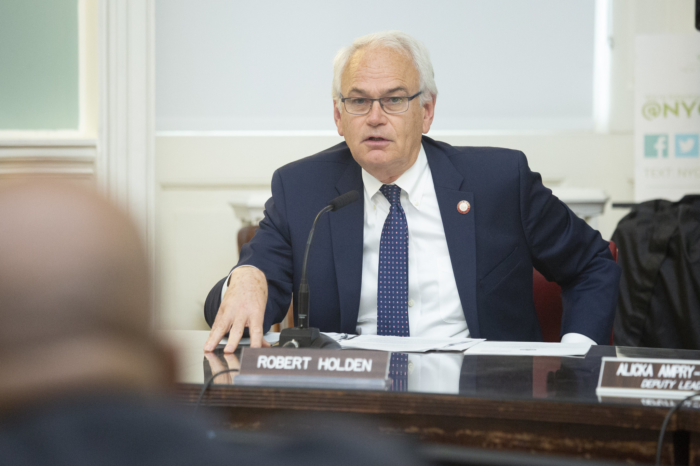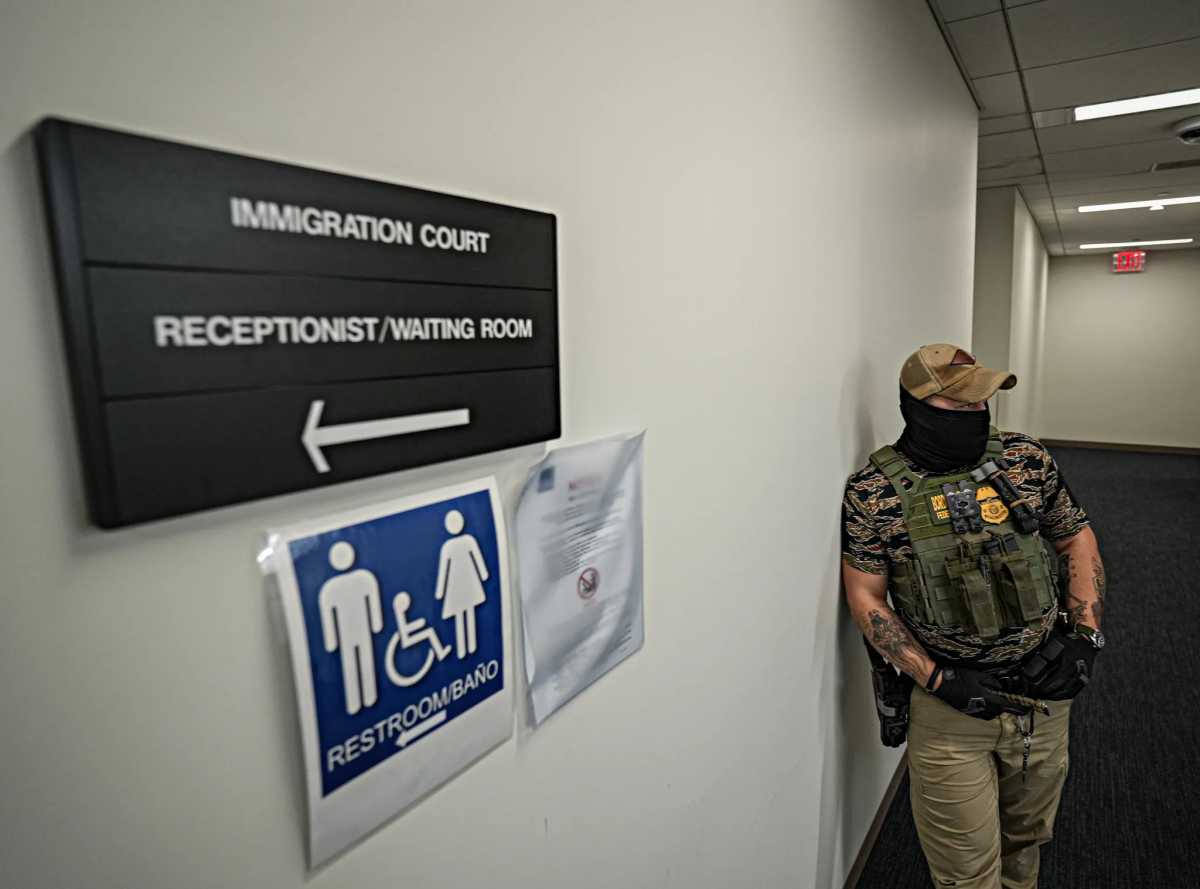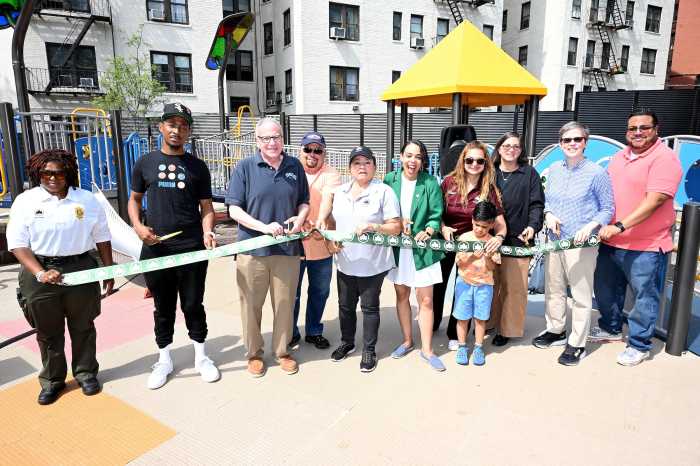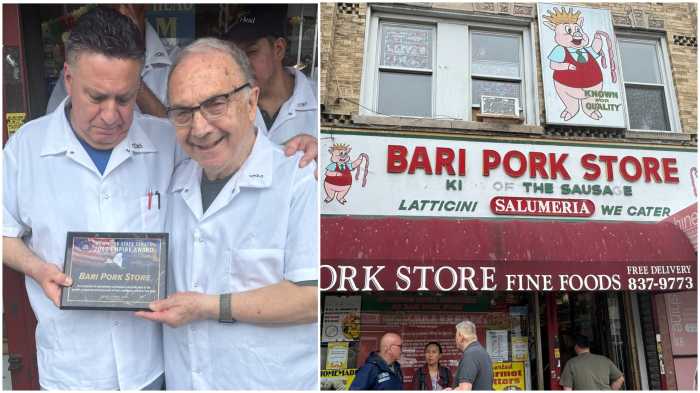By Albert Amateau
The public open spaces around the superblocks that New York University intends to develop in the next couple of decades are treasured by the community because they include parks, gardens, playgrounds and a dog run.
Those 2.4 acres of green have a complex history that will become more complex as N.Y.U. moves forward with its plans to add between 1.5 million and 3 million square feet of developed space, including a 400-foot-tall tower that would include a hotel.
Community Board 2’s Monday public discussion of the green strips along Mercer St. and LaGuardia Place and along Bleecker and W. Third Sts. between Mercer and LaGuardia, was predictably lively, at times raucous, but basically serious.
N.Y.U. came in for bitter criticism for its plan to ask the city to include the strips — except for those along LaGuardia Place — as part of its development site.
Village neighbors who have raised children and grandchildren in the Mercer St. Playground on the Washington Square Village superblock demanded that N.Y.U. give up its plan for the strip where the playground is located.
“Why are 21-year-olds who are not even born yet [future N.Y.U. students] more important than us?” asked Sylvia Rakow, a resident of 505 Laguardia Place in the Silver Towers superblock.
Hiroko Rodriguez, with her husband, Steve, at her side and her 1-month-old son, Shiki, in a sling carrier, said she hoped that the playground would still be there for her son to play in.
Dr. Eileen Aid, who came to N.Y.U. to major in music and psychology and stayed as a Village resident, turned up with a flute.
“I want to get rid of the rats like the Pied Piper,” she said looking at the N.Y.U. representatives. She played a few bars to the delight of the crowd, which began to grow weary after two hours of the meeting.
Lee Schwartz, a Bleecker St. resident, sang rather than spoke her testimony, adapting the lyrics of Woody Guthrie’s “This Land Is Your Land” to fit her view that N.Y.U. should defer to community needs. (She also submitted her adaptation in the form of a poem/letter to the editor. See Page 18 in this issue.)
Jeffrey Katz, a Village resident for more than 40 years, said his 2-year-old son can say, “Mine, mine, mine and more, more, more. So can N.Y.U.,” Katz said, “but we have to say, ‘No, no, no.’”
Rita Lee, a Community Board 2 district manager in the 1980’s, said, “The Village defeated Westway and Robert Moses — N.Y.U. is nothing compared with them.”
Who controls the strips has been a longstanding bone of contention. A legacy from 50 years ago when three large superblocks were created as part of Robert Moses’ urban renewal plan, the strips are under the Department of Transportation’s control. But D.O.T. has agreed to let the Department of Parks and Recreation maintain them.
Andrew Berman, director of the Greenwich Village Society for Historic Preservation, and other community leaders have been calling on the city to transfer jurisdiction of the strips from D.O.T., which can legally take them over at anytime without notice for transportation use, to the Parks Department, under which the legal protections would be more secure.
Berman also told the Monday forum that the strips should be preserved as public space owned by the public as “a lasting emblem of the Village’s effort that stopped Moses from eviscerating this part of town,” referring to Moses’ failed plan to turn LaGuardia Place and West Broadway into a thoroughfare connecting to a river-to-river Lower Manhattan Expressway across Broome St.
In the past, Community Board 2 adopted resolutions calling for transferring the strips, which have long been used for park purposes, to Parks, but the city has declined to act.
“The legal status of the strips is a procedural scandal,” said former City Councilmember Alan Gerson, a former C.B. 2 chairperson who headed the board when it passed a transfer resolution. “The Parks Department told us if the mayor authorizes a transfer they would accept it,” Gerson said. “That’s what it needs, and the fact that it has not been acted on is a scandal,” he said.
Gerson suggested the transfer might require a revision of the city charter. But he noted that the revision might be done without a public referendum — like the last revision that suspended term limits to allow Mayor Bloomberg and several councilmembers to win third terms.
“If it looks like a park and acts like park, we believe it’s a park,” said a spokesperson for New Yorkers for Parks. She said the “alienation of parks” procedure — to convert parks to nonpark uses — is long and arduous and would add a measure of protection for the green strips.
An advocate for the dog run on Mercer and Houston Sts. recalled the struggles to get N.Y.U. to build it in 1981. Dog run advocates later made major efforts to rebuild the run after it began to sink because of the underground Minetta Brook. The dog run is open to members only but anyone can apply for membership with dues of $50 per year. It includes 200 families and 315 dogs of all sizes and breeds.
Miriam Kaplan, head of the Washington Square Village Tenants Association, contended that N.Y.U. needs to include the strips in its development plan to allow it to build projects as large as planned.
“The strips are the only way for them to get a large-scale development site with enough open space to get approval for the F.A.R. [floor area ratio] that they want,” said Kaplan.
But Alicia Hurley, N.Y.U. vice president of government affairs and community engagement, said the strips are not needed for the project’s approval.
She said in a statement later, “N.Y.U. has included the D.O.T. strips in its site planning to have a cohesive and holistic approach to how to reshape the superblocks over the next two to three decades. While we plan to add buildings to the site, much of the planning has revolved around open space planning, with the aim of reinstating those spaces on the superblocks with improved conditions.
“This planning includes playgrounds, active areas, sitting areas and the dog run,” Hurley continued. “While we think that the best approach to the superblocks would be integrating the open spaces, including the D.O.T. strips, with the new building plans, having those strips is not required for achieving our uniform land use review procedure [ULURP] approvals. Some pieces of our proposed buildings do touch upon the D.O.T. strips, but modifications can be made if required.”






































